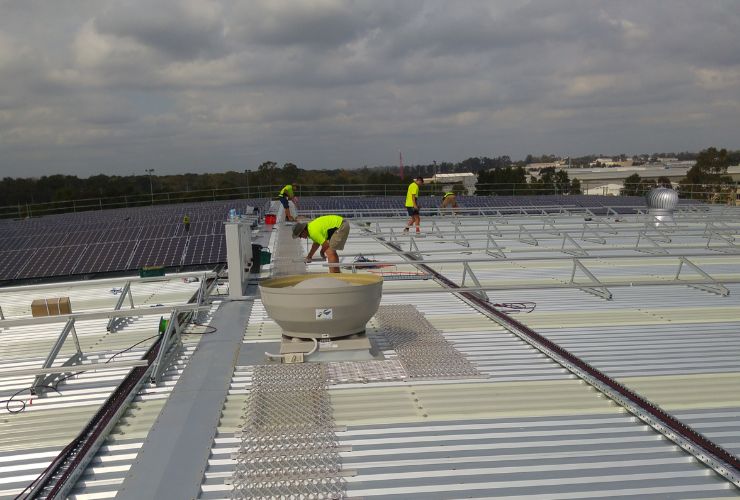Fast read
Understanding commercial electricity bills is crucial for assessing the financial viability of going solar. These bills consist of various charges, including energy, network, environmental, and others.
Energy charges are based on electricity consumption at different times, while network charges cover operating costs and demand charges for peak consumption. Solar-only systems may reduce peak energy demand charges, but it's not guaranteed.
Breaking down the energy bill into sections is important for understanding. This includes the power billing period, usage summary, supply charges, metering charges, environmental fees, solar feed-in tariff, and taxes.
Commercial solar systems might have export limits because of grid capacity. However, by optimising the system, there can be an increase in self-use of solar energy. This can help make better use of valuable solar energy.
Consulting an Independent Solar Consultant or solar engineer can help navigate complexities and ensure accurate financial modelling. If questions arise, contacting the local energy supplier is recommended.
How do I read my commercial electricity bill?
Commercial electricity bills for large market customers are often complex and challenging to understand. However, for a proper financial assessment, the Independent Consultant must consider this data in the economic model if you seek to go solar.
The different charges fall into categories like energy, network, environmental, and others. Energy charges are based on the cost of electricity used, measured in kilowatt-hours (kWh), at different times of the day. This affects the total bill amount. Electricity usage during peak, shoulder, and off-peak periods incurs different rates.
Network charges are often a substantial part of commercial customers’ bills. Network charges connect to the operational costs of the electricity network and also bill partly based on the energy unit (kWh) used at different times of the day.
Depending on your distribution network service provider (DNSP), various capacity charges are imposed. Electricity demand charges are based on your highest energy use during a set time and differ depending on where you live.
In other words, you are charged for the maximum amount the network needs to provide for you. One large spike in power usage each month can impact your capacity charge for the month or even the entire year. This will depend on the regulations in your specific area.
A solar-only system could reduce the peak demand charge, but it is not guaranteed. The most likely scenario is a partial reduction depending on the DNSP and region. If your solar company needs to explain it – be cautious.
What steps do you take to understand all the charges?
Commercial electricity bills can be overwhelming for many, causing them to avoid dealing with them. Instead, we suggest treating it like an elaborate feast—cut it into bite-sized pieces. This approach helps you avoid overpaying.
A) Look at the commercial electricity billing period to understand how many days you pay for electricity.
B) Check how many meters are quoted in the commercial electricity bills and make sure the reference number on the meter matches your meter number in the electricity box
C) Confirm the start and end date of the billing period
D) If there is a usage summary – please note this is simply the total kWh consumed and the cost per kWh. This part may have graphs to compare how much you use with other businesses or how much you used last year.
E) Your commercial electricity bill will feature a supply charge. This is the cost the electricity retailer charges you each day for the supply of electricity. In commercial electricity bills, the supply charge can also include a variable amount linked to your overconsumption for that period.
What is a commercial electricity distribution charge?
F) Energy retailers also charge the business a distribution charge. Similar to a petrol or road tax, these funds go toward maintaining the electricity poles and wires infrastructure.
G) Some companies charge a metering charge, which is the cost of maintaining and reading the electricity meter.
H) If you have decided to have “green” electricity supplied or the energy retailer or government have levied an environmental tax, these costs are registered in a section entitled- environmental charges.
I) If you have a solar system and your energy retailer pays a feed-in tariff, you should also see a credit on the commercial businesses’ electricity bill.
J) Taxes such as the GST are the final category to understand when reading your commercial electricity bill.
Is there a feed-in tariff for commercial solar?
For larger solar systems, your electricity retailer might offer little feed-in tariff to purchase exported excess electricity from you. Alternatively, they may provide none and limit the export opportunity for large systems.
It is important to understand and consider this when creating financial models to determine the right size for a solar system. A financially optimised solar system can be designed to sell electricity at specific times. This can be done even without a feed-in tariff.
Commercial solar systems will require export limitations in some areas – as the grid can not handle the export, especially in summer. This demonstrates that valuable renewable energy is being wasted. The energy companies and previous politicians responsible for the grid have not taken any action.
It may, for example, export energy in summer to have sufficient solar energy for self-use in winter. An Independent Solar Consultant or solar engineer can help you navigate this challenge.




